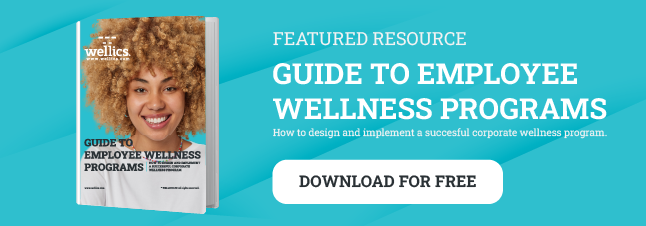Burnout is the state of physical, mental, and emotional exhaustion that occurs due to prolonged stress at work. Professions that demand high workloads and unpredictable hours result in more extreme burnout effects. According to Statista, the industry with the highest burnout rate in 2019 was the hospitality and food services industry, followed by medical and health care.
While workplace wellness programs have many goals, one important objective of optimizing employee well-being is to prevent burnout or to assist with burnout recovery. By learning how to help employees recover from burnout, organizations can reduce the impact it has on operations and help sustain a thriving and engaged workforce.
Burnout Recovery Time
How long it takes to recover from burnout depends on many factors. Since burnout affects people differently, recovery time hinges on how a person experiences work-related exhaustion. Because of this variation, recovery time can take anywhere from a few weeks to several years.
Some of the factors that influence how long it takes to recover from burnout include:
- Length of employment: How long you worked under stressful conditions influences the speed of burnout recovery. If chronic and low-grade burnout has persisted for years, it may take equally as long for your nervous system to recover. If you continue to work in your existing profession, then burnout recovery may also be prolonged.
- Traumatic events: What causes a person’s burnout can also affect the recovery process. If an employee experienced traumatic events, such as assault, harassment, bullying, or involvement in a serious workplace accident, it may take longer for them to recover. In extreme situations, they may need to work with a mental health professional for several weeks, months, or years.
- Level of support: How soon someone receives support for burnout recovery can also affect how long it takes to heal from work exhaustion. The level of support someone receives is equally as important. To recover from extreme burnout, a person may need support in different areas of life, from therapy to career counseling to physical rehabilitation.
How to Recover From Burnout at Work
Burnout recovery is an ongoing process, and its success depends on a person’s ability to accept their circumstances and willingness to make the necessary changes to stop and prevent future burnout.
There are certain steps you can take to improve your burnout recovery time, including:
- Prioritizing personal health: As soon as a person realizes they’re suffering from burnout, they should immediately take steps to prioritize their personal well-being. Burnout often coincides with neglecting one’s personal health, so returning to regular exercise, healthy eating habits, and proper sleep are basic burnout recovery steps.
- Spending time with loved ones: One of the conditions leading to burnout is that people spend more time at work than they do with their family members and friends. Therefore, a smooth burnout recovery process should involve decreasing the amount of time one spends at work and increasing quality time spent with loved ones.
- Reflecting on past experience: It’s important for those who are prone to burnout to reflect on the behaviors that led to exhaustion. While recovering, it’s a good idea to examine the factors that led to burnout, the early symptoms that arose, and other related experiences that can help a person gain deeper personal insight.
- Investing in personal development: The healing process should ultimately lead to growth and include altering personal patterns to prevent future burnout. Consider pursuing personal development courses or acquiring a new skill. The growth achieved from learning something new helps build a sense of resilience in the face of life’s challenges.
- Creating a new path forward: Recovery from burnout should also include defining a new path forward. Ask yourself what’s possible for you post-burnout. Consider how you’d like your life to look now that you have a new opportunity to reframe your view of yourself and your work.
FAQs About Burnout in the Workplace
It’s important for employees and employers alike to understand what burnout is, how to spot it, and what can be done to prevent it. Below are some answers to frequently asked questions that employees and workplace leaders have about burnout.
What Are the Signs of Burnout?
According to the American Psychological Association, some of the top burnout symptoms to look for are:
- Emotional exhaustion and fatigue
- Low morale or feeling overwhelmed
- Lack of sense of accomplishment
- Procrastinating or completing the bare minimum level of work
Everyone experiences negative emotions from time to time, and it’s unrealistic to expect to always like your job and feel engaged. Burnout, however, is a persistent state of negativity and feelings of detachment and dissatisfaction in one’s role that lasts for several weeks or months.
What’s the Difference Between Burnout vs. Depression?
While burnout and depression share some common symptoms, they are two distinct conditions. Depression is a clinically diagnosed mental health condition while there is no clinical burnout definition.
Additionally, depression is a pervasive condition that affects several or all aspects of a person’s life, while burnout is specifically related to a person’s job role or work environment. Burnout arises in response to work, while depression is the result of various factors, including family history.
How Can I Recover From Burnout While Still Working?
In many cases, people who experience burnout are unable to simply leave their jobs due to financial obligations. Below are some tips on how to recover from burnout without quitting your job:
- Seek mental wellness support, including support provided by your employer
- Set better work-life boundaries, take daily breaks, and maximize your paid time off
- Spend more time doing things you enjoy outside of work
If possible, communicate with your team about your experience with burnout and let them know about the important changes you need to make to ensure you recover successfully.
Prevent Burnout at Work With Employee Wellness Programs
Many employees today are facing unprecedented levels of workplace stressors, increasing the risk of burnout at work. To maintain a healthy workforce, organizations can implement new approaches that better support employees and mitigate the conditions that lead to burnout.
Workplace wellness platforms like Wellics give organizations a powerful tool to help boost employee health and well-being and gain better insight into the factors that impact important metrics like productivity and engagement. One of the core educational modules included in the Wellics platform is mental well-being. Our expert-led module teaches employees critical stress-management skills and how to set better work-life boundaries.
Discover everything the Wellics employee wellness platform has to offer your organization.
Originally published October 16, 2022 - 13:08 PM, updated September 3, 2024
Sources
- https://www.statista.com/statistics/1274617/industries-burnout-globally/
- https://www.apa.org/monitor/2018/02/ce-corner
- https://health.clevelandclinic.org/signs-of-burnout/










